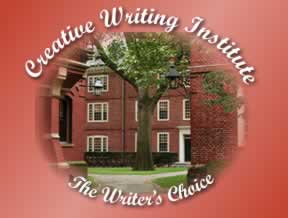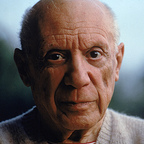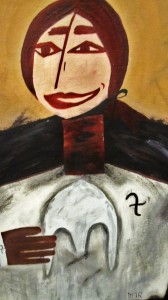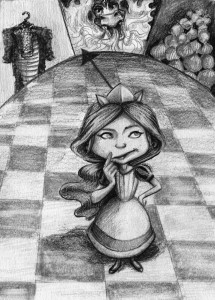Re-blog from No Wasted Ink, interview by Wendy Van Camp http://nowastedink.com/2014/10/22/author-interview-diane-m-robinson/
Diane may be a self-proclaimed delusional fantasy writer, but she takes the craft of writing well seriously. Her goal is to leave something original and fun in the minds of her readers. I think she has hit that goal out of the ballpark with this interview. I’m pleased to welcome Diane to No Wasted Ink.
 Hello Wendy and readers of No Wasted Ink. My name is Diane Mae Robinson; I am a children’s fantasy/adventure chapter book author who lives in an out-of-the way magical forest in central Alberta, Canada. Yep, magical forest: gnomes, elves, dragons, castles, all of it. People who know me say I am somewhat delusional—ummm, aren’t all fantasy writers?
Hello Wendy and readers of No Wasted Ink. My name is Diane Mae Robinson; I am a children’s fantasy/adventure chapter book author who lives in an out-of-the way magical forest in central Alberta, Canada. Yep, magical forest: gnomes, elves, dragons, castles, all of it. People who know me say I am somewhat delusional—ummm, aren’t all fantasy writers?
Besides being a writer I have other
jobs, which pay for the upkeep of the magical forest: dental office manager, art teacher, and writing instructor. In this magical forest, I live in a small castle-type house, which my husband and I designed and built by ourselves several years ago. The forest is also home to my five horses and four dogs. Through the years living here, I have worked on building many wonderful medieval-type flower gardens and stone pathways, filled with sculptures of magical creatures that I have made. These gardens surrounded by the forest is where I get my inspiration for writing fantasy.
When and why did you begin writing?
I started writing around the age of eight–well after I had learned to read and, by then, had read every children’s book in the small town library—when I decided to make up plays and perform them for the neighborhood kids. The only other volunteer in my plays was my younger sister, which was good and bad—the themes of the plays were medieval; my sister would not act the part of the prince unless she was allowed to wear her cowboy duds. So, as I was the princess being rescued by my handsome prince (aka cowboy), the plays were performed to a live audience of five until a particular day when chaos struck. My prince had a simple task—jump from the roof of the house and rescue me where I was tied to a tree by the evil villain. The prince (aka cowboy) jumped, broke her arm, my mom heard the racket, I was untied by mom, sister went to hospital, sister got home from hospital, I asked her: “Why didn’t you just use your cape?” Mom banned me from ever making up plays again. When sister forgave me, I wrote more plays that she agreed to be the prince (aka cowboy) in. So, what else to do but bring my merry band of play watchers deeper into the forest and out of prying eyes.
When did you first consider yourself a writer?
I have considered myself a writer ever since I started writing plays at age eight: I write, I create, I am a writer.
Can you share a little about your current book with us?
I am currently working on book three of my fantasy/adventure series, Sir Princess Petra’s Mission–The Pen Pieyu Adventures. Book one, Sir Princess Petra,—The Pen Pieyu Adventures, was published in 2012 and has since won three major book awards. Book two, Sir Princess Petra’s Talent—The Pen Pieyu Adventures, was released in Sept. 2013. I am also working on a grammar book for elementary grades; this book has a medieval theme and the characters from my series are in this book also.
What inspired you to write this book?
I’ve always preferred fantasy stories and movies over all other genres. So, once the characters of this series started invading my head several years ago, they became so real to me that I had no choice but to write about their adventures. Often, I just feel like the writer while they tell me what is going to happen.
Do you have a specific writing style?
I am definitely a character-driven writer over a plot-driven writer. Plot is very important in children’s books, but if kids can feel and see the adventures through my characters. to me, all is won. I have an out-of-the box sense of humor and this comes out in my characters and their situations.
How did you come up with the title of this book?
The characters woke me up in the middle of the night, dictated their names, told me the places, declared their situations, and yes, even forced me on the titles of the books. Does this ever happen to other writers? Just curious.
Is there a message in your novel that you want readers to grasp?
The main character of this series, Sir Princess Petra, is a princess whose greatest accomplishment is becoming a knight. She accomplishes this through kindness, understanding, and acceptance of others; all to the dismay of her father, the king, who thinks knights have to be big and mean and nasty.
Are experiences in this book based on someone you know, or events in your own life?
All my characters and situations in the stories are purely fictional—made up in my delusional (or so I’m told) mind.
What authors have most influenced your life? What about them do you find inspiring?
I’ve been reading C.S. Lewis for years. His stories influence me by the way the reader can totally get lost in his fantasy world. Lemony Snicket influences me with his sharp wit and humor, and the bizarre situations of his stories. Both of these writers inspire me to write engaging stories for children that leave a mark, have good values, and are fun to read.
If you had to choose, is there a writer would you consider a mentor? Why?
I think anybody that writes a great story is a mentor because they instill in us, other writers, the need to write well.
Who designed the cover of your book? Why did you select this illustrator?
The cover designer and illustrator, Samantha Kickingbird, was selected by the publisher as she works there. I had no choice in the matter and didn’t see the first illustrations until well into the set-up stages of the books. I couldn’t have asked for a better illustrator for this series.
Do you have any advice for other writers?
As I tell my writing students: If you love to write, learn to write well. Don’t be in a hurry to publish. Re-write and edit, and then do it again and again until you have nearly created perfection before submitting your manuscript to publishers. My first book was rejected 27 times over a 9 year period before I finally received a traditional publishing contract. And my 2nd book was well on it’s way to receiving numerous 5 star reviews before I acquired a literary agent. It takes patience, perseverance, and the art of writing well before you have a book that you can be proud of.
Do you have anything specific that you want to say to your readers?
Write from your heart, with passion and imagination, and you will breath life into your stories.
Diane Mae Robinson
From a magical forest, near St. Paul, Alberta, Canada
Diane Mae Robinson
From a magical forest, near St. Paul, Alberta, Canada
FACEBOOK
GOOGLE+
TWITTER
LINKEDIN
BLOG
AMAZON AUTHOR PAGE
Cover Artist: Samantha Kickingbird
Publisher: Tate Publishing, LLC
AMAZON BOOK ONE
AMAZON BOOK TWO
BARNES & NOBLE BOOK ONE
BARNES & NOBLE BOOK TWO
ABE BOOKS 1
ABE BOOKS 2
For more information about Diane Mae Robinson and her multi-award winning dragon books for children: www.dragonsbook.com

 Creative Writing Institute is celebrating their 10th anniversary with a Flash Fiction contest that runs through October 31. No entry fee and cash prizes. First prize, $100; 2nd prize $50; 3rd prize $25. See the guidelines at
Creative Writing Institute is celebrating their 10th anniversary with a Flash Fiction contest that runs through October 31. No entry fee and cash prizes. First prize, $100; 2nd prize $50; 3rd prize $25. See the guidelines at  The National Award for Arts Writing contest is hosting the Marfield Prize. Their deadline is October 15, 2018. There is no fee to enter and there is a $10,000 grand prize! To enter or learn more please visit their website at
The National Award for Arts Writing contest is hosting the Marfield Prize. Their deadline is October 15, 2018. There is no fee to enter and there is a $10,000 grand prize! To enter or learn more please visit their website at  If you love poetry and humor, this contest is for you. This marks the 18th Annual Wergle Flomp Humor Poetry Contest. Open from August 15, 2018 thru April 1, 2019, there is no entry fee. A $1,000 grand prize and a $250 second prize will be awarded. The top twelve contestants will also be published online. To learn more or to enter please visit their website at:
If you love poetry and humor, this contest is for you. This marks the 18th Annual Wergle Flomp Humor Poetry Contest. Open from August 15, 2018 thru April 1, 2019, there is no entry fee. A $1,000 grand prize and a $250 second prize will be awarded. The top twelve contestants will also be published online. To learn more or to enter please visit their website at:
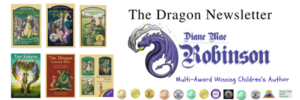 The Dragon Newsletter Coloring Contest hosted by DragonsBook.Com. Three categories: ages 5 – 8; ages 9 – 12; ages 13- 18. Sign Up for the newsletter for the free coloring book and contest details:
The Dragon Newsletter Coloring Contest hosted by DragonsBook.Com. Three categories: ages 5 – 8; ages 9 – 12; ages 13- 18. Sign Up for the newsletter for the free coloring book and contest details:
